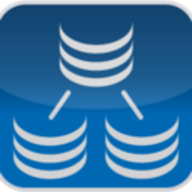

JumpMind SymmetricDS and Equalum are competing products in the data integration space. Equalum appears to have the upper hand due to its advanced capabilities, although JumpMind SymmetricDS holds an appeal for budget-conscious users.
Features: JumpMind SymmetricDS is valued for its support for heterogeneous databases, integration flexibility, and seamless synchronization. Equalum offers real-time data ingestion, extensive transformation capabilities, and a cloud-native architecture.
Ease of Deployment and Customer Service: JumpMind SymmetricDS provides a straightforward deployment model and dependable customer support, which is beneficial for organizations with limited technical resources. Equalum has a modern and automated deployment process, suitable for complex IT environments, supported by responsive service teams.
Pricing and ROI: JumpMind SymmetricDS is known for its lower setup cost, making it attractive for small and medium businesses seeking cost-effective solutions with a good ROI from reduced overheads. Equalum, while more expensive, delivers a significant ROI due to its advanced features and efficiency, making it suitable for larger enterprises willing to invest in leading technology.
Equalum is a fully-managed, end-to-end data integration and real-time data streaming platform, powered by industry-leading change data capture (CDC) tech and modern data transformation capabilities (streaming ETL and ELT). Equalum's enterprise-grade platform features intuitive UI allowing you to build robust, real-time data pipelines in minutes.
JumpMind SymmetricDS is a powerful data replication software that provides synchronization software solutions for both databases and filesystems. This software is platform-independent and web-enabled as well as database agnostic. JumpMind SymmetricDS creates prompt bi-directional data replication while scaling to a large amount of nodes and working in close to real time across both WAN and LAN networks. This allows companies to integrate data using the feature for continuous change data capture.
This data replication software allows companies with limited network bandwidth or bad connectivity to benefit from excellent cloud conditions. The greatest benefit of JumpMind SymmetricDS is its vast integration across databases, streaming platforms, and data warehouses. Some of the relational databases where this data replication software can be used include Oracle, PostgreSQL, MySQL, Sybase, Informix, Ingres, Tiber, and VoltDB. NoSQL databases like MongoDB, Apache Cassandra, and Azure Cosmos are also compatible with the JumpMind SymmetricDS data replication software. The data warehouses that are compatible with this software include Teradata, SAP HANA, Azure-SQL server by Microsoft, BigQuery, Amazon Redshift, Pivotal Greenplum, and Snowflake data warehouse. Providing coverage of so many databases and warehouses allows broad outreach of the JumpMind SymmetricDS across many different companies and users.
JumpMind SymmetricDS offers many valuable features, including:
Other features include tools for conflict detection and resolution, embedding and extending, filtering, subsetting, and transforming.
The benefits of using JumpMind SymmetricDS include:
According to the CEO at a non-profit, JumpMind SymmetricsDS is fully featured and is also very easy to use and install. He finds it to be self-explanatory to use and says that their support is very good.
We monitor all Data Replication reviews to prevent fraudulent reviews and keep review quality high. We do not post reviews by company employees or direct competitors. We validate each review for authenticity via cross-reference with LinkedIn, and personal follow-up with the reviewer when necessary.